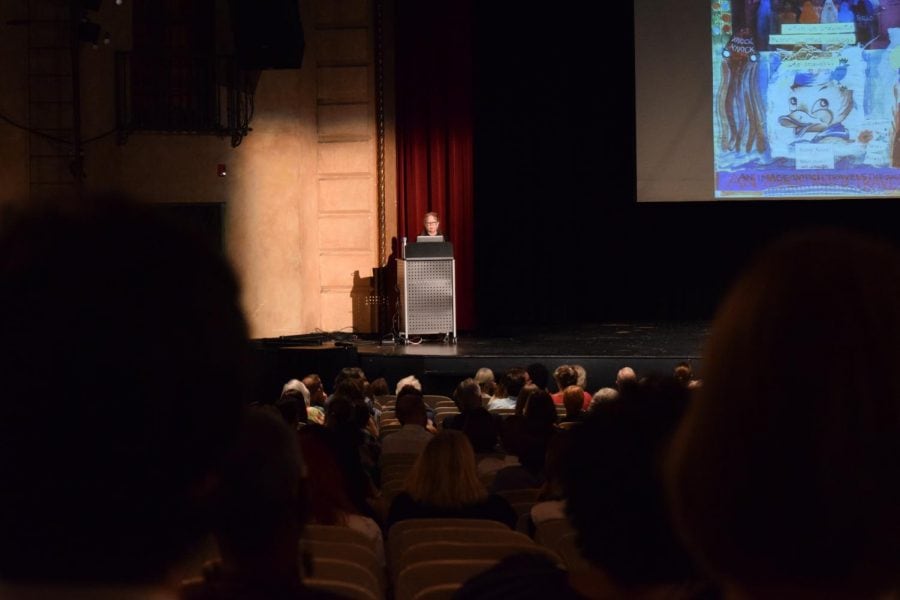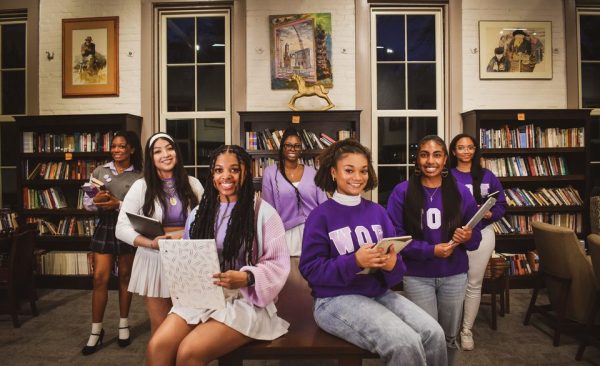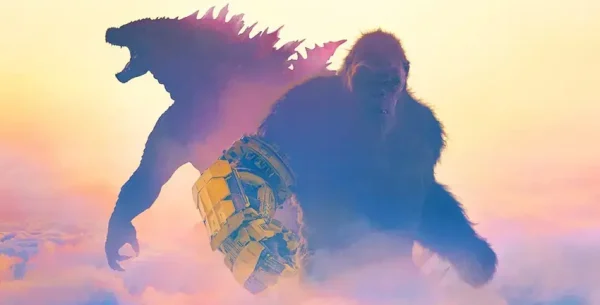Cartoonist talks creativity, education
September 22, 2019
Graphic Artist and University of Wisconsin-Madison professor are a few titles among many that are used to describe the acclaimed Lynda Barry, who gave a talk on creativity Tuesday evening at the Bama Theatre. Detailing what an image is, the divide that school creates between writing and drawing and her personal life in relation to art, Barry covered it all.
Sitting in the half-lit room, Lynda Barry said she liked it that way – it let her see her audience.
There was a range of guests to be seen attending her “What It Is” talk on creativity. She began her lecture by singing a song, claiming that if you can sing in front of a crowd you can do anything.
Graphic novelist and self-proclaimed “accidental professor” Lynda Barry knew exactly how to keep her audience engaged as she spoke about the meaning of an image and the way that children experience art and writing. She detailed her own life in relation to her journey through the world of art, where she says we all begin as children. Describing how, for a child, writing one’s name is like drawing each letter because the movement is not yet automatic, she made it clear that we all start out drawing at least some things.
A child of immigrants, raised primarily by her Filipino grandmother who took a story-based approach to child-rearing, Barry said she’s “glad to have been born in a world full of characters.”
She accredits her former professor Marilyn Frasca, for whom she first modeled, for getting her started with art. She saw the unique way that Frasca taught her students and recalled thinking, “I don’t want to be a model for her class, I want to be in her class.”
One thing led to another, and Barry is now a renowned cartoonist, novelist and teacher herself.
Barry’s theory is that a drawing is just how a human hand moved over time and that we should let that happen as it may.
A big believer in natural and organic creativity, Barry also works with 4- and 5-year-olds, for whom she believes that the writing and drawing elements of ability have not yet split, allowing kids to have an aptitude to tell stories that are naturally satisfying. She has had people copy kids’ drawings to see how the lines are recreated and even entertained the idea that when adults say “this looks like a four-year-old drew it,” that’s actually what it looks like when you’re getting an idea that has not yet formed beyond the childlike nature of the mind.
“What is an image?” Barry said. “I was asked this at 19, and I am now 63 and have been chasing the question ever since.”
She noted that the question is such a complicated one that trying to explain it becomes harder than demonstrating it, and so she demonstrated.
Showing the audience pictures of images drawn by children, ones of hands, other art and a video of a baby discovering its own hands, she reasoned that we are born into a world that is full of images from the moment that we become attached to our favorite stuffed animal. Image is more than art; it is perception and reasoning.
She combines narratives and art so beautifully, it is almost difficult to tell where one ends and the other begins and vice versa. The kind of person that evokes real emotion, Barry talked animatedly and passionately about her 4-year-old “co-researchers’” and the joys of working with children as a study of images and ideas. There is a certain fluidity to the writing done in science, and she focused on similarities between scientists’ drawings and kids’ drawings. When evolution was brought up, she reasoned that “things basic to our survival tend to persist, and art persists,” so it must be truly important to us as a species.
Most people quit drawing at the age of 8 or 9, when they realize they can’t draw a nose or a hand, according to Barry, who went on to mention that comics leap right over that problem and that’s why they are attractive to many people.
Barry talked about how comics aid in a different kind of communication, which appeared to be a well-received notion among those in attendance.
The organizer of the event, Dr. Wells Addington, explained that having Barry as a part of the University’s Visiting Writers series felt like an awesome way to kick off the school year.
“Ernie Pook’s Comeek was a comic [of hers] that ran in alternative newspapers throughout the nation for three decades, so she’s got a lot of acclaim from all that and now she’s doing these kind of graphic books, oftentimes I think they seem pretty autobiographical,” Addington said.
Not only were students in attendance to appease their professors, there were families with children who laughed at the pictures shown of their young peers helping to research creativity. There were older folks who likely saw her comics in the newspapers or followed her development as an artist or maybe just found out about her and wanted to hear her unique perspective on the world and all things creative.
The talk was ended by a performance of “You Are My Sunshine,” sung through closed lips.
“From the image part of me to the image part of you,” Barry said.











